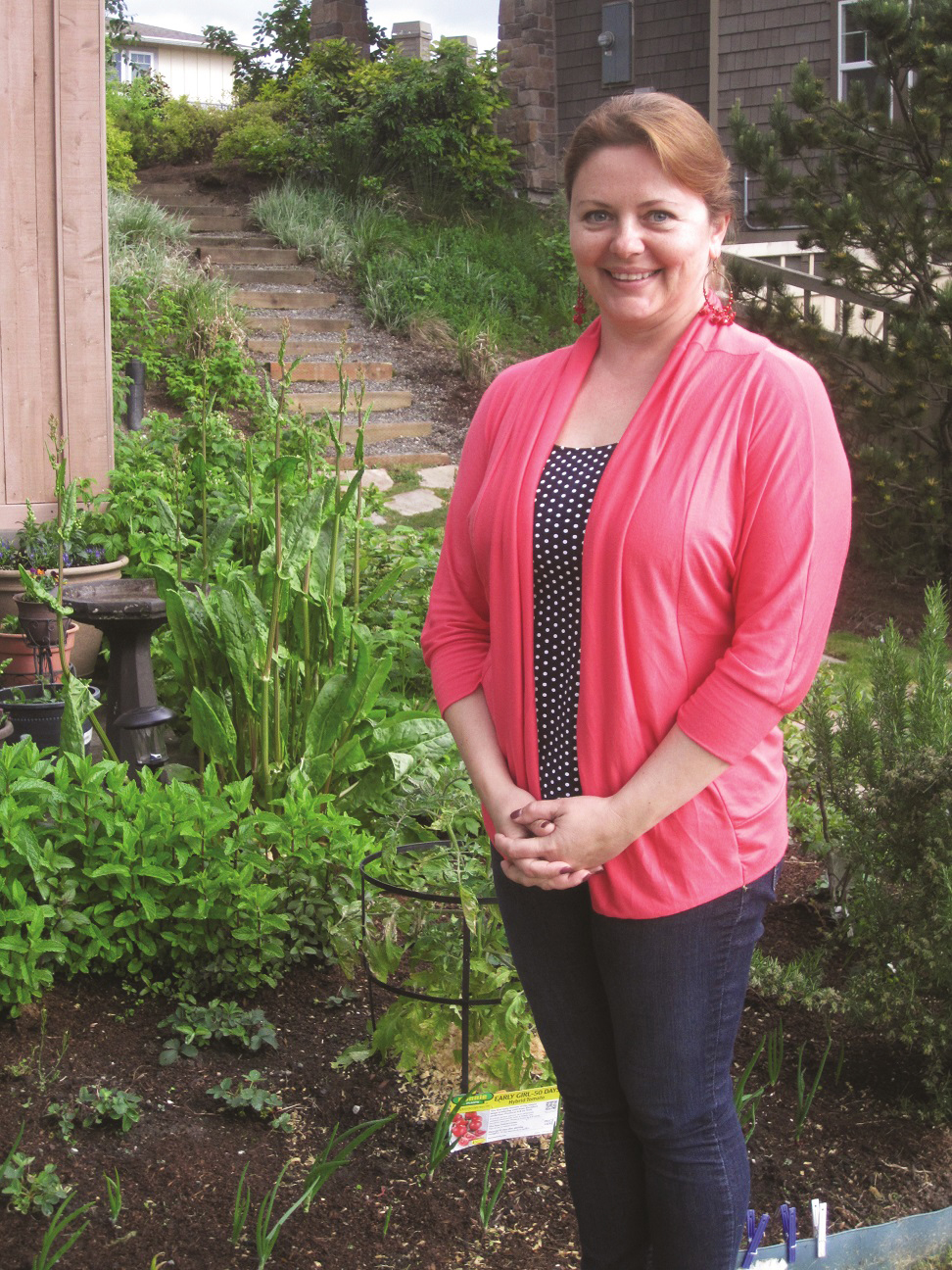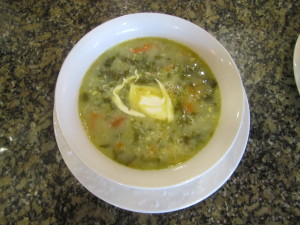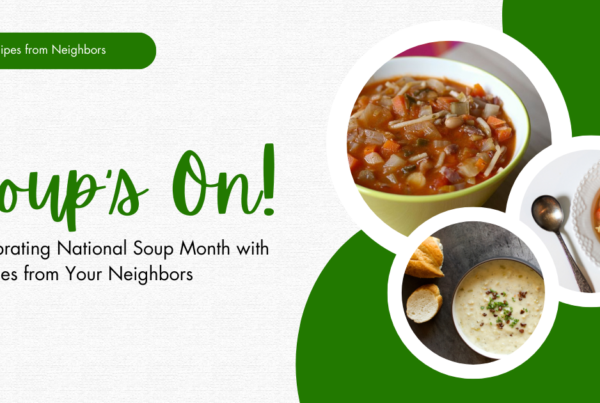
Russian Green Borscht
As published in July Connections
By Kathryn Meeker, Dahlia Park
If you want to understand Russian cuisine, you need to understand Russia’s climate. Put simply, it is not the warmest place in the world. The southern regions are certainly warmer than the tundra, and many areas enjoy a few months of warmer weather each year, but overall Russia is not a land of fruit trees and fresh herbs.
Traditional Russian food is hearty and filling, made from plants that grow whether temperatures soar or not: potatoes, root vegetables, and cold-friendly greens. All of these come together in Yana Alentyeva’s recipe for Spring Greens Borscht, a popular twist on the classic beet-based soup. Eaten warm or cold, it is the picture of classic Russian home cooking at its most delicious.
As a child growing up in the south of what was then the Soviet Union, Yana ate soup every day. Her mother and grandmother insisted that warm liquids aided digestion and that a hearty soup was the best thing for growing children. Her mother and grandmother weren’t alone in their beliefs about the wisdom of daily soup. Even school lunches included some kind of traditional Russian soup, every day, in every season. Typical recipes came from what families could make out of their own garden, but this could be limiting at times. “Russian food is not as flavorful as in other parts of the world,” Yana admits. “Herbs don’t grow there.” Food was uncomplicated but nourishing.
Now a mother herself, Yana incorporates traditional Russian foods into her family’s diet. Her two daughters are learning to cook as well, keeping ties to their parents’ culture through their favorite dishes. Asked what dish she would use to introduce friends to her family’s cuisine, Olga, 19, describes a simple meal of Kotlets, a Russian meatball served with mashed potatoes or buckwheat. And her favorite soup? Okroshka, a summer soup, always served cold. Whey serves as a broth with radishes, onions, potatoes, cucumbers, eggs, and ham to round out the dish. And where do Russian cooks get the whey for their soup? It is left over from making their own cheese, which is eaten for breakfast: just mix the cheese with sour cream and top with honey or jam. Think sweetened yogurt, Russian style.
After explaining how to make cheese into breakfast and whey into soup, Yana takes me down to the garden behind her family’s home on 10th Avenue Northeast. Looking out towards the Olympic Mountains, she sees that her sorrel is going to flower. The long, spinach-like leaves growing from thick stalks have been producing well since February, and could keep going through the end of autumn if she cuts them back. “But it won’t last this long in Russia,” she explains. “Maybe for a few months.” But this is not a Russian garden. Chives and onions are coming along, with tomatoes and a several kinds of berries not far behind. The climate of the Northwest has brought more variety to her garden than her mother may have had, but her favorite dishes—and those her children savor with her—are just like what she grew up with back home.
 Spring Greens Borscht
Spring Greens Borscht
This is a very easy to make and healthy dish, and is great hot or cold, vegetarian or with variation of chicken or beef broth. Lots of antioxidants and vitamins!
3 – 4 potatoes, peeled and diced
1 bunch green onions, chopped
1 bunch fresh spinach leaves, chopped
1 bunch fresh sorrel, chopped
2 eggs, beaten
Salt and black paper to taste
1 tablespoon white sugar or 1 lemon squeezed
1/4 cup sour cream, for topping (optional)
2 tablespoon fresh dill, chopped for topping (optional)
Fill a large pot about 3/4 full with vegetable or beef or chicken broth; bring to a boil. Add diced potatoes and cook until fork-tender, 8 to 10 minutes. Stir in green onions and cook another 1 to 2 minutes. Stir in spinach and sorrel; cook another 2 to 3 minutes, or until wilted; remove from heat.
Pour the beaten eggs into the mixture in a slow and steady stream, stirring constantly, until the soup thickens. Season with salt, black paper and vinegar to taste. Pour soup into a large bowl and garnish with sour cream and dill. Serve with black bread (rye or pumpernickel).





